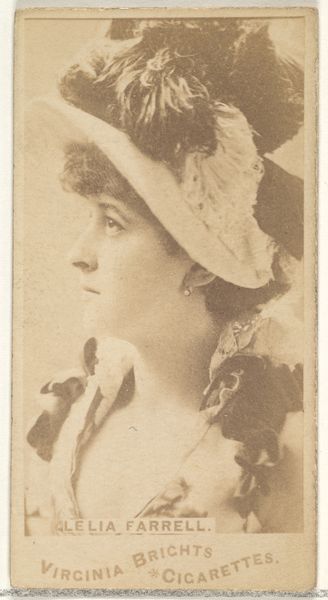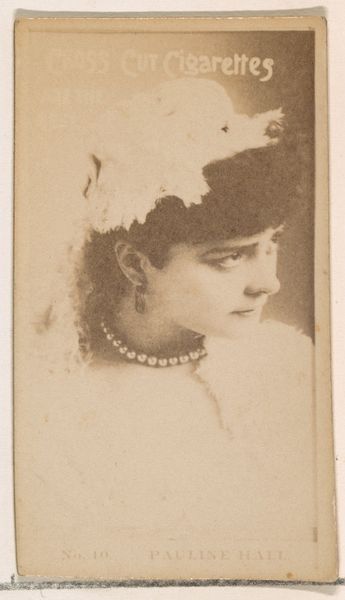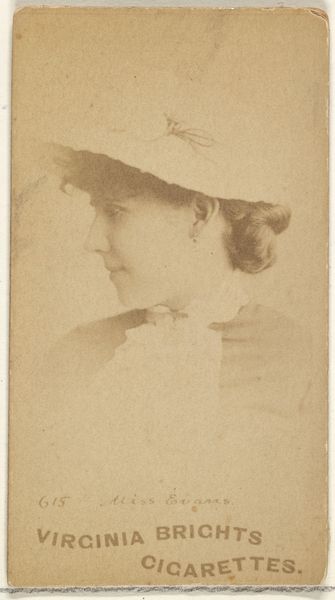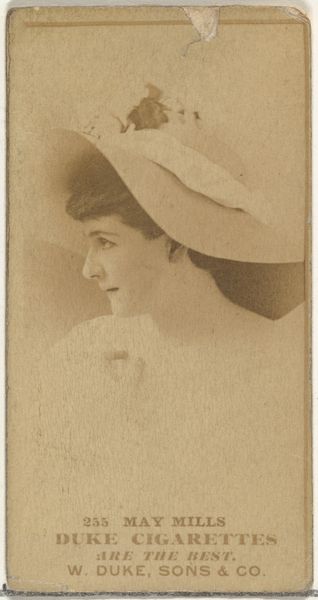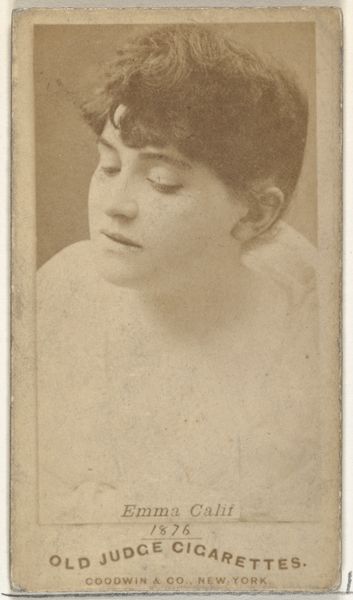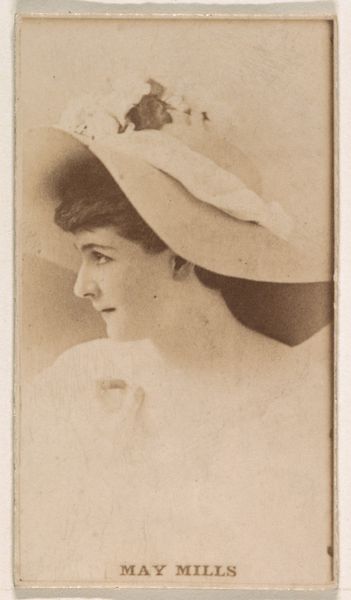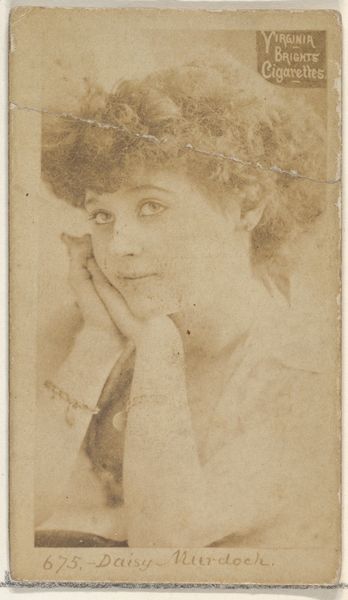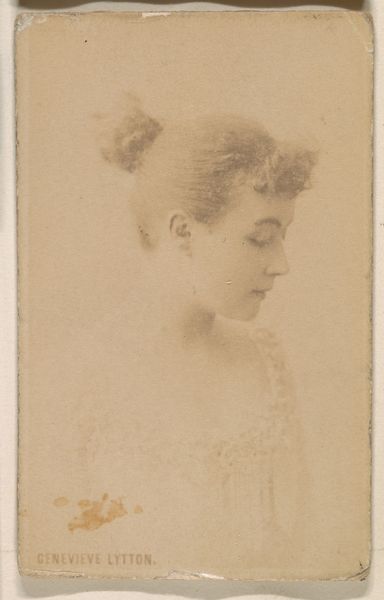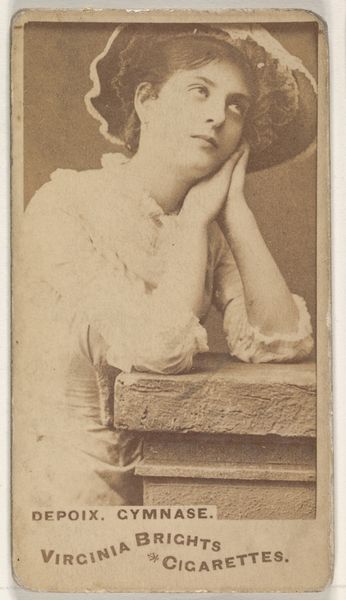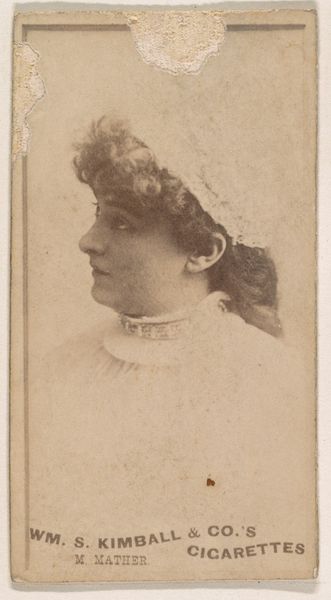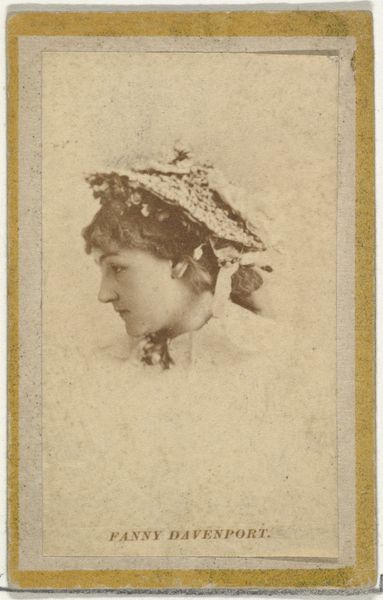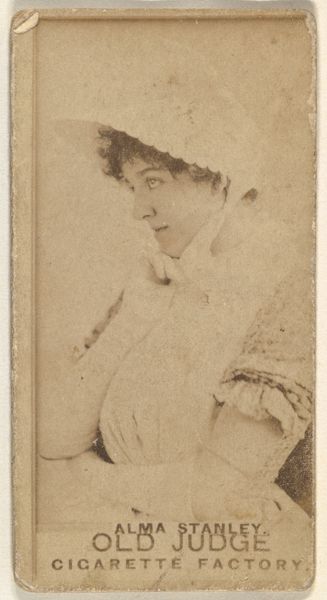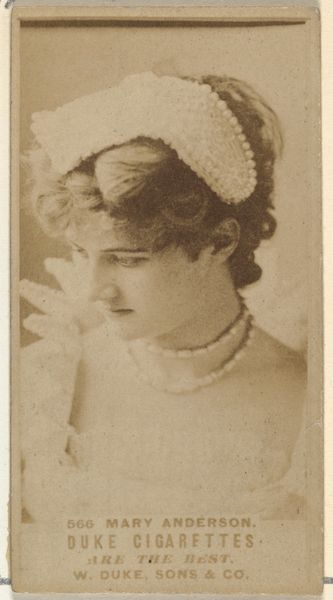
Fanny Johnston, from the Actors and Actresses series (N171) for Old Judge Cigarettes 1886 - 1890
0:00
0:00
drawing, print, photography, albumen-print
#
portrait
#
drawing
#
toned paper
# print
#
photography
#
old-timey
#
coloured pencil
#
orientalism
#
19th century
#
albumen-print
Dimensions: sheet: 2 11/16 x 1 3/8 in. (6.9 x 3.5 cm)
Copyright: Public Domain
Curator: Immediately, the sepia tone creates a strong sense of nostalgia, almost romanticizing this woman's place in time. Editor: Indeed. We're looking at a Goodwin & Company albumen print, likely dating from 1886 to 1890. It is part of their "Actors and Actresses" series, a promotional item for Old Judge Cigarettes. This one depicts Fanny Johnston. Curator: It is so interesting that what seems like a standard portrait—lovely light, careful composition—is actually an advertisement. What was the process of imprinting this onto a cigarette card? How does its form dictate its function? Editor: Well, these cards were mass-produced, so albumen prints allowed for multiple reproductions from a single negative, suiting industrial needs. Placing portraits like this on cigarette cards tells us a lot about the period. Consumption was tied into popular entertainment, subtly promoting specific social roles, norms, and ideas of fame. Note that the actress here seems to be performing some ambiguous version of an "exotic" woman with her flowy dress and flower-covered hat. Curator: Yes, the clothing and props definitely lean into this kind of fabricated "Orientalism" aesthetic. Editor: Precisely. How do you see the circulation of this portrait contributing to constructions of gender and celebrity at the time, in tandem with consumer culture and fantasies of the "Orient"? It suggests that cultural consumption extends well beyond just smoking the cigarettes themselves. Curator: And consider the labor: the photographers, the factory workers producing these cards en masse, and the tobacco farmers, often from marginalized communities… All this invisible labor underpins the romantic portrait itself. This object carries so much weight. Editor: This print’s endurance as an aesthetic object prompts us to critically engage with the layers of cultural messages, social values, and even exploitations woven into its very fabric. Curator: It does provoke a deeper consideration of what materials and manufacturing mean in terms of cultural capital and value creation. I appreciate you putting it in that broader context. Editor: And it reminds us to ask: whose stories are not pictured here, whose hands produced this image, and what narratives were being reinforced through such widely distributed ephemera?
Comments
No comments
Be the first to comment and join the conversation on the ultimate creative platform.
